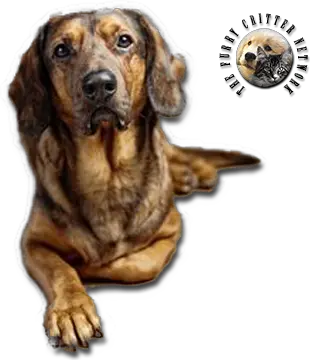Breed Standard
Head: Long. Slightly domed skull. Slight stop. Straight nose-bridge. Muzzle fairly broad. Thin, well joined flews.
Ears: Medium in length, wide, rounded, hanging straight against head.
Eyes: Medium in size, round, dark or light brown.
Body: Long. Muscular neck without dewlap. Pronounced withers. Well-curved chest. Full loin. Pronounced tuck-up. Round, sloping croup. Straight, firm, long back.
Tail: Medium in lenght, thick at the base, usually hanging or raised in a loose curve. Hair forms a brush.
Hair: Short, very thick, lying flat against the body, hard. Sparse undercoat. Long and harsh on the back, abdomen and backs of the tighs.
Coat: Black and red: dark black with rust markings. Brown: brown with lighter markings, brown nose. Red: reddish-fawn, rust, reddish yellow with lighter markings. White: spotted with several colors (Westphalian): all colors allowed for red combined with white. Markings below the eyes, on the muzzle, legs and chest.
Size: 34 to 42 cm (13.4 - 16.5 in).
Weight: Approx. 18 kg (39.7 lb)
History
Similar to the Dachshund, the Alpine Basset Hound is an intermediate form between the pure basset and long-legged pointer. In fact, in 1896 the breed was named the Alpine Dachsbracke. Dachsbracke was recognized by the top canine organizations in Austria as the third scenthound breed. In 1975 the name was altered to Alpenlaendische Dachsbracke and the FCI declared Austria as the country of origin. In 1991 the Alpenlaendische Dachsbracke was included in Section 2 of Scenthounds in the FCI nomenclature.
Behavior
This hardy, obstinate, agile dog has great stamina, a fighting spirit, a good voice and a very keen sense of smell. He does not hunt in packs. He is used in hunting hare, fox, and wild boar, retrieving feathered game (wild goose, ect.) and tracking wounded game. He makes a very affectionate pet. Most Alpine Dachsbrackes are excellent with children and good with dogs and other pets, though they may exhibit a strong prey drive typical of many scent dogs.He needs firm training.
He needs space and exercise and requires regular brushing.
Function
The breed is officially recognized as a scenthound for blood trails, although it is closely related to a group of Bracke (dogs, that are usually used for chasing the game) so, the Alpine Dachsbracke is a "multi-hunting" dog. He is confidently finding a game after the shot, and usually this dogs are used for work on a blood trail of a hoofed animals. The Alpine Dachsbracke is using a voice on the trail, chases and stops the game, which makes it easies to monitor the process of hunting. Pet.
Health
No health information available.






